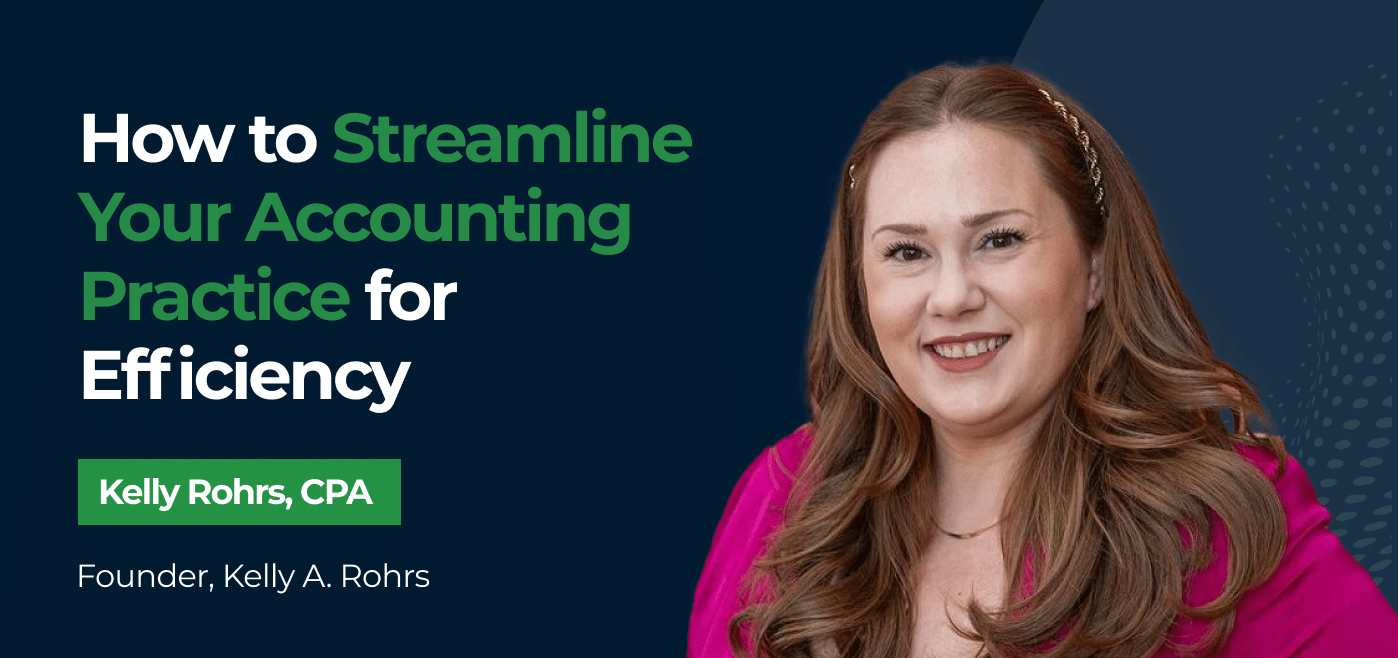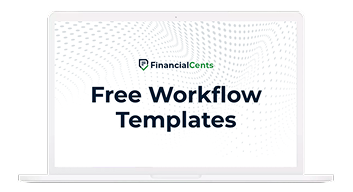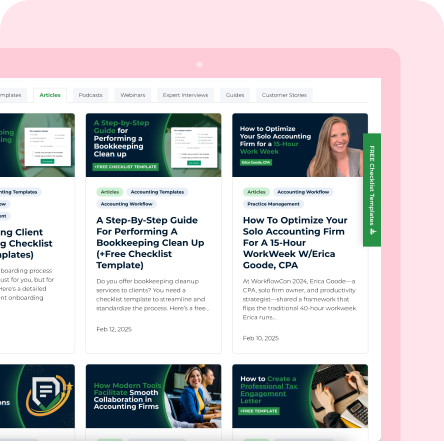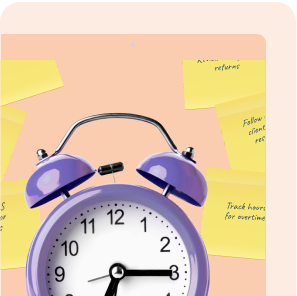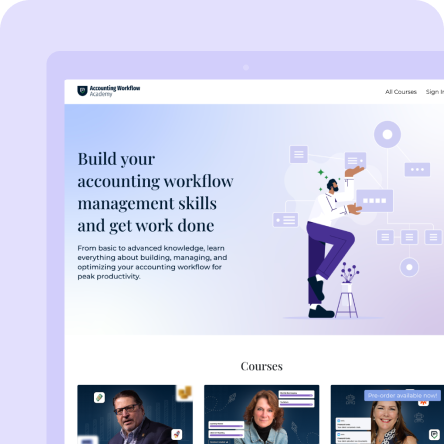In a profession where deadlines don’t blink and client demands feel endless, efficiency is your lifeline.
At WorkflowCon 2024, Kelly Rohrs, CPA, pulled back the curtain on how she transformed her accounting firm from a one-woman operation into a scalable, virtual-first powerhouse. Whether you’re a solo practitioner or managing a small-to-mid-sized firm, her blueprint for streamlining your practice offers a practical, battle-tested path to better systems, saner workdays, and sustainable growth.
This article will walk you step-by-step through her most impactful strategies, tools, workflows, boundaries, and mindsets that can help you take control of your time and optimize your practice for peak performance.
Audit Your Workflow: Identify Bottlenecks Before You Automate
Before you introduce any shiny new tool, pause. Because technology layered on top of a broken process only accelerates the mess.
Instead, begin with the unglamorous but utterly critical step of auditing your current workflow. It’s the move that separates chaotic firms from high-performing ones.
Why This Step Matters More Than You Think
You might think your problems are software-related, but more often, the real friction is process-based.
- Is client onboarding taking too long?
- Are emails getting lost or repeated?
- Do projects hit snags at the same stage every month?
Kelly’s Take:
If something’s taking longer than it should, that’s your first clue. Even if you’re not billing by the hour, you should know what ‘normal’ feels like."
Efficiency starts with clarity. You need to understand how work flows or doesn’t flow through your firm.
How to Run a Workflow Audit in 4 Steps
Here’s a proven framework to guide your audit:
Step 1: Map Your Core Processes
Use whiteboards, sticky notes, or flowchart tools like Lucidchart or Miro to document your key workflows. Start with the client journey:
- Lead capture → Proposal → Engagement letter → Onboarding
- Monthly bookkeeping → Review → Reporting
- Tax return prep → Review → Client delivery
Don’t skip the details. Include who owns each step, what tools are used, and how long each stage takes.
Step 2: Interview Your Team
Even if you have only one employee—or you are the employee—this step is crucial.
Ask questions like:
- “What slows you down the most?”
- “Which tasks do you repeat that feel unnecessary?”
- “Where do clients get confused?”
- “What do you dread doing each week?”
These questions will expose repetitive pain points and inefficiencies hiding in plain sight.
Step 3: Follow a Client Through the Process
Take one recent client—from first inquiry to final delivery—and walk through their entire experience. Where did the handoffs happen? Where did things lag?
This “walkthrough method” reveals breakdowns such as:
- Requests buried in inboxes
- Files waiting for approval with no follow-up
- Team confusion over status
Most firms are reactive. They only fix problems when clients complain. But if you track the friction, you can fix it before it explodes."
Step 4: Score and Prioritize Your Bottlenecks
Once you’ve identified where your workflow breaks down, rank each issue based on two factors:
- Impact: How much time or money does this bottleneck cost?
- Ease of Fix: How simple is it to resolve?
Plot them on a 2×2 matrix. Focus first on high-impact, easy-to-fix issues these are your low-hanging fruit.
For example:
| Bottleneck | Impact | Ease to fix | Priority |
| Chasing clients for documents via email | High | Medium | ★★★★☆ |
| Manual data entry into CRM | Medium | High | ★★★★☆ |
| Confusing internal task handoffs | High | Low | ★★★☆☆ |
Switch to Cloud-Based Accounting Software
If you’re still working on QuickBooks Desktop or juggling Excel spreadsheets with file-sharing nightmares, it’s time for a reality check.
The accounting industry is in the middle of a massive cloud transformation. And staying behind isn’t just inefficient—it’s a risk to your firm’s credibility, scalability, and client experience.
The passing back and forth of QuickBooks files should be a thing of the past. It slows you down, and it frustrates your clients."
What Is Cloud-Based Accounting Software?
Cloud-based accounting software is hosted online rather than installed locally on your computer. Think of it as accessing your books through a secure browser, anytime, anywhere.
Popular platforms include:
- Financial Cents
- QuickBooks Online (QBO)
- Xero
- FreshBooks
- Zoho Books
- Wave (for freelancers and small businesses)
These tools give you real-time access, automatic backups, easier collaboration, and seamless updates, all with no desktop restrictions.
Key Benefits of Going Cloud (and Why It Matters for Efficiency)
1. Real-Time Collaboration
With cloud software, your team and clients can view the same data at the same time. No more emailing files, version confusion, or reconciling over outdated reports.
Use case:
You spot an anomaly in a client’s books during your review. Instead of waiting for them to send a file, you jump into QBO, leave a comment, and they address it in real time.
2. Seamless Integration with Your Tech Stack
Cloud software plays well with others, especially project management tools, CRMs, billing systems, and automations like Zapier.
Integration means faster workflows and fewer mistakes.
3. Anywhere Access for a Virtual Team
Rohrs runs a fully remote firm, with staff in New York, Louisiana, and Wisconsin. A desktop-only solution? Non-starter.
With cloud-based software, you can:
- Work from anywhere
- Hire across time zones
- Access data securely on the go
This flexibility enables scale and freedom.
4. Enhanced Security and Automatic Backups
Ironically, the cloud is more secure than local storage. Providers offer:
- 256-bit encryption
- Automatic backups
- Two-factor authentication
- Real-time updates and patches
You no longer have to worry about server crashes or corrupted files.
Centralize Communication with Client Portals
Email is where accounting workflows go to die.
You lose threads. You forget attachments. Clients send documents in seven parts, labeled “TaxStuffFinalFinalFinal.pdf.” And somewhere between the eighth email follow-up and the third shared drive link, a simple task becomes a slow-motion disaster.
If this sounds like your firm, it’s time to move to a client portal your firm’s single source of truth for communication, document sharing, task management, and more.
A centralized place for communication where your team has access to everything is a game changer. It’s not just about saving time. It’s about reducing client confusion and making your team look polished and professional."
What Is a Client Portal?
An accounting client portal is a secure, cloud-based platform where you and your clients can:
- Exchange documents safely
- Track deadlines and tasks
- E-sign engagement letters
- Share notes, messages, and updates
- Complete checklists
- Review reports
It’s the modern alternative to email, Dropbox, and manual status updates.
Why Centralizing Communication Matters
Here’s what happens when communication is scattered:
- Clients miss deadlines
- Team members duplicate work
- Projects stall waiting on responses
- Details get lost in inboxes
If your growth plans include:
- Hiring more team members
- Offering higher-tier advisory services
- Serving clients across multiple states
Then a centralized communication system is non-negotiable.
Without one, every new client or employee adds chaos. With one, you simply plug them into your process and scale without breaking.
Automate With Purpose
Automation is about removing friction.
If your team is manually inputting the same data in multiple tools or if you’re spending precious time doing tasks that could run in the background, you’re leaking hours and profit. The solution? Integrate and automate your tech stack.
If your softwares are not talking to each other, you’re wasting time. That’s time you could spend on strategy, or with your family, or building your firm."
When your tools communicate, tasks get completed without you. That’s real scalability.
What Does Automation Look Like in a Modern Accounting Firm?
Imagine this:
- A prospect fills out your contact form → their info flows automatically into your CRM
- They receive a customized proposal via Ignition → once signed, they’re added to your onboarding checklist in Financial Cents
- Their name appears in QuickBooks Online, your calendar, and your communication portal, no re-entry required
This is workflow automation. It’s not just about speed, it’s about eliminating mistakes, enforcing consistency, and freeing you up to work on your business, not just in it.
Top Tools to Start Automating Your Accounting Practice
| Tool | Purpose | Why It Works |
| Financial Cents | Workflow management, automation, billing, time tracking | Speed up client data collection through automated requests and text/email reminders |
| Zapier | Automates workflows between 6,000+ apps | No-code integrations between any tools |
| Ignition | Proposal, payment, and engagement letters | Kicks off client onboarding automatically |
| QBO | Financial review & transaction cleanup | Live syncing eliminates redundant tasks |
Replace Meetings with Video Communication to Save Time and Scale
Meetings have their place, but too often they’re a time trap. Scheduling conflicts, extended discussions, and delayed decisions can stall your workflow. For modern accounting firms, shifting from live meetings to asynchronous video communication offers a smarter, more scalable way to collaborate and communicate.
Kelly Rohrs, CPA, shared how using short videos transformed her client experience and saved her team significant time during tax season.
“During tax season, I rarely meet with clients anymore,” she explained. “Instead, I send a quick video going over their return. Clients appreciate being able to watch it on their own time, and it saves me hours every week.”
Use Cases for Video Across Your Accounting Firm
- Client Onboarding
Record a welcome message that walks through your process, timelines, and portal instructions. This sets expectations upfront and creates a personal connection without scheduling a kickoff call. - Tax Return Summaries
Instead of booking a review meeting, send a recorded explanation of the key parts of the return, where the numbers came from, and what the client needs to do next. It’s efficient, accurate, and easy for them to reference. - Financial Reports and Insights
Highlight key trends, cash flow issues, or advisory opportunities using visual context. A monthly video summary adds value that a static PDF report can’t deliver. - Internal Training and SOPs
Demonstrate tasks like reconciliations, document prep, or software navigation. These videos reduce the time needed to train new staff and ensure consistency. - Answering Repetitive Questions
If multiple clients ask how to pull a report or upload documents, record your screen once and send it to anyone who asks. These videos become reusable assets. - Scope Clarifications or Policy Reminders
Rather than typing out long explanations, speak directly to the client in a brief video explaining scope limitations or policy updates. Tone is easier to convey, and the message feels more collaborative than corrective.
Streamlining Your Accounting Firm Is About Progress
You don’t need to rebuild your accounting firm overnight. You don’t need to master every automation tool, migrate your entire tech stack in one weekend, or become a workflow wizard by Monday.
But you do need to start.
Each improvement stacks. Every process you streamline returns time, energy, and clarity. And every minute you reclaim is a step toward the firm you envisioned when you started.
